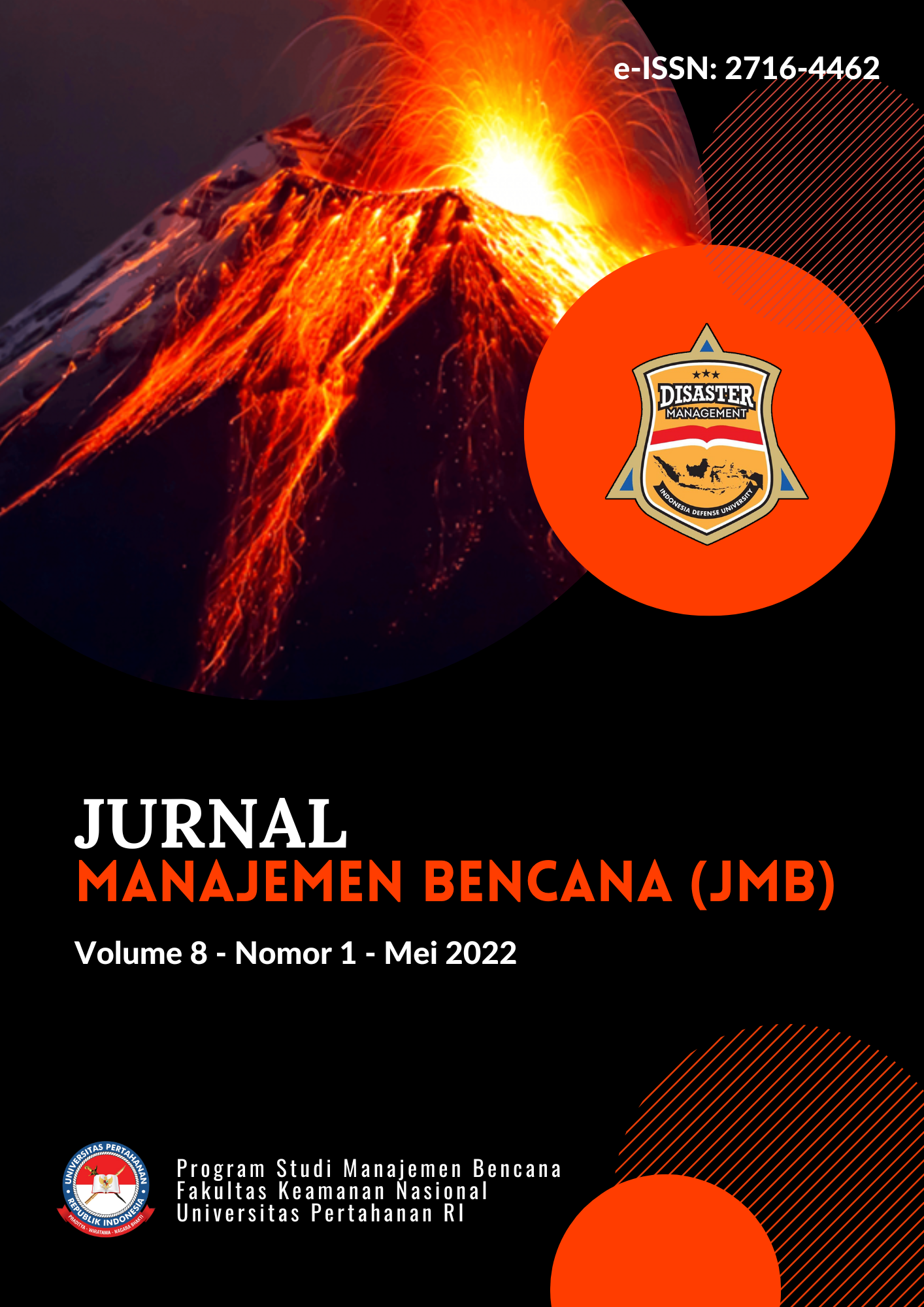ADAPTASI MASYARAKAT PENYINTAS PASCA GEMPA CIANJUR TAHUN 2022
DOI:
https://doi.org/10.33172/jmb.v9i2.14497Keywords:
Adaptasi, Gempa Bumi, CianjurAbstract
The Cianjur earthquake was a large, shallow earthquake caused by the Cimandiri Fault, which was later determined to be the Cugenang Local Fault. The impact of the 5.6-magnitude earthquake devastated most of the Cianjur Regency area, causing a lot of suffering and misery for the post-Cianjur earthquake survivors. Community resilience is needed to face crises and threats of disaster. This research aims to determine the adaptation strategies of community survivors after the Cianjur earthquake disaster. This is quantitative research with a survey method. The research population is based on the sub-district that has the worst impact, namely Cugenang District. The sampling technique uses simple random sampling. Data collection techniques use questionnaires and documentation. The data analysis technique uses quantitative descriptive methods to determine community adaptation strategies. The research results show that the most widely used form of adaptation strategy is the survival strategy, which involves implementing a reduction in the portion of expenditure and control over income and expenditure.
References
Badan Meteorologi, Klimatologi, dan Geofisika. Retrieved October, 07, 2023 from https://www.bmkg.go.id/berita/?p=peta-bahaya-gempabumi-cianjur-dengan-sumber-gempa-patahan-cugenang&lang=ID
Badan Pusat Statistik. (2020). Survei Sosial Ekonomi Nasional (SUSENAS). Jakarta
Baiquni, M. 2007. Strategi Penghidupan di Masa Krisis, Belajar dari Desa. Yogyakarta: Penerbit IdeAs.
Bolt, B.A. (1978) Earthquakes: A Primer. W.H. Freeman and Company, San Francisco, 112-115.
DFID. 2000. Sustainable Livelihood Guidance Sheet. United Kingdom: DFID.
Katadata Media Network. Retriver October, 22, 2023 from https://databoks.katadata.co.id/datapublish/2022/12/08/update-jumlah-bangunan-rusak-akibat-gempa-cianjur-per-7-desember-2022
Mankiw, N. G. (2003). Macroeconomics (Vol. 41). New York: Worth Publishers.
Nur, A. M. (2010). Gempa bumi, tsunami dan mitigasinya. Jurnal Geografi: Media Informasi Pengembangan dan Profesi Kegeografian, 7(1).
Rahman, F. A., Ruslanjari, D., & Giyarsih, S. R. (2022). Strategi Adaptasi Masyarakat selama masa Pandemi Covid-19: Studi di Desa Tegaltirto Kecamatan Berbah Kabupaten Sleman. Jurnal Kawistara, 12(1), 1-16.
Ruslanjari, D., Safitri, E. W., Rahman, F. A., & Ramadhan, C. (2023). ICT for public awareness culture on hydrometeorological disaster. International Journal of Disaster Risk Reduction, 92, 103690.
Scoones, I., 1998. Sustainable Rural Livelihoods: A Framework For Analysis.
https://opendocs.ids.ac.uk/opendocs/bitstream/handle/20.500.12413/3390/Wp72.pdf?sequence=1.
Tupan, T. T., Widuri, N. R., & Rachmawati, R. R. (2020). Analisis bibliometrik publikasi ilmiah tentang prediksi gempa bumi berbasis data Scopus periode 2015-2020. LIBRARIA: Jurnal Perpustakaan, 8(1), 31-48.
White, Benjamin N.F. 1980. Rural Household Studies in Anthropological Perspective. Bunga rampai: Rural Household Studies in Asia. Singapore University Press. Singapore.
Downloads
Published
How to Cite
Issue
Section
License
Copyright (c) 2023 Fathin Aulia Rahman, Abdul Haris Achadi, Hesti Marlina

This work is licensed under a Creative Commons Attribution-NoDerivatives 4.0 International License.






